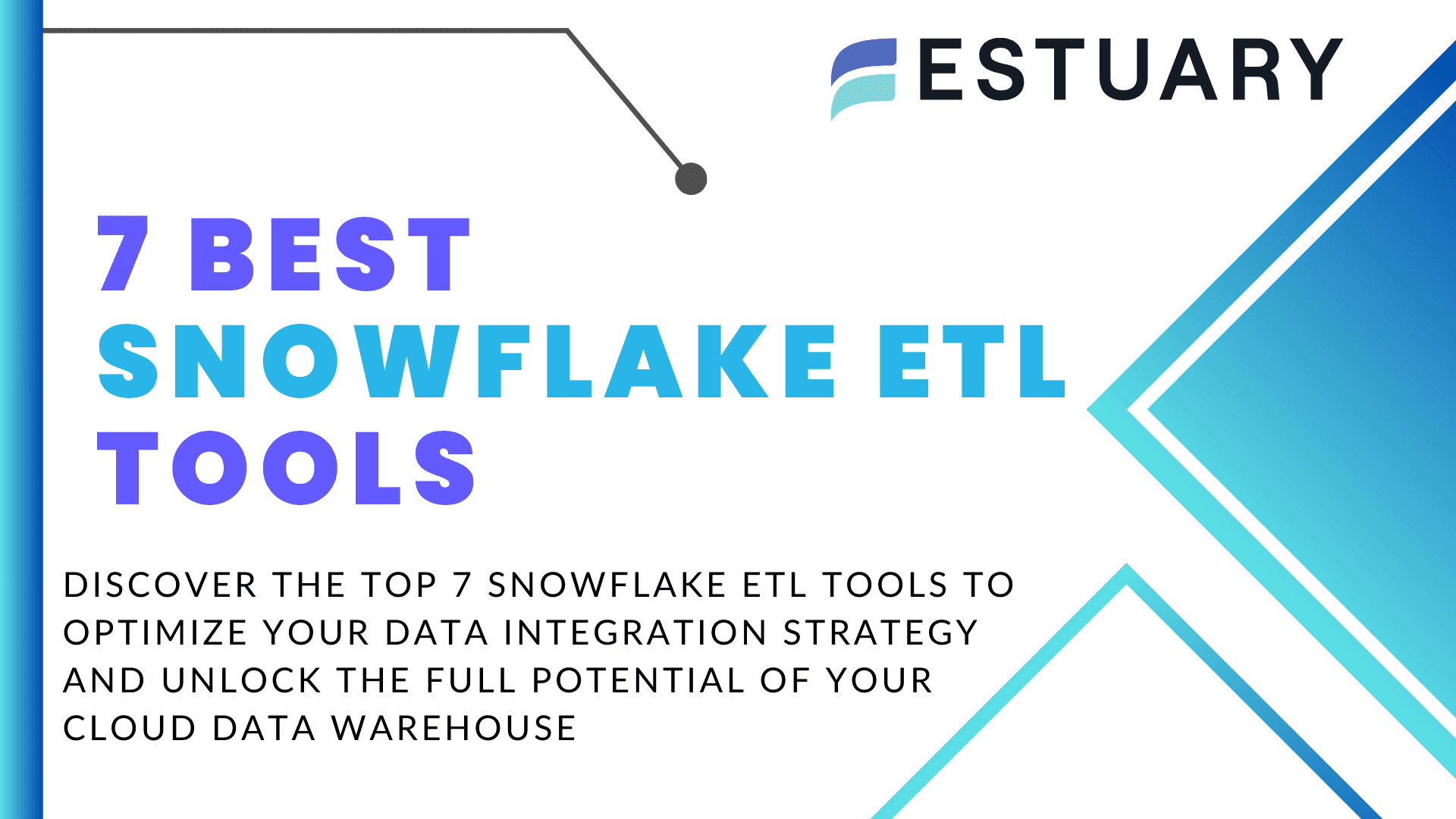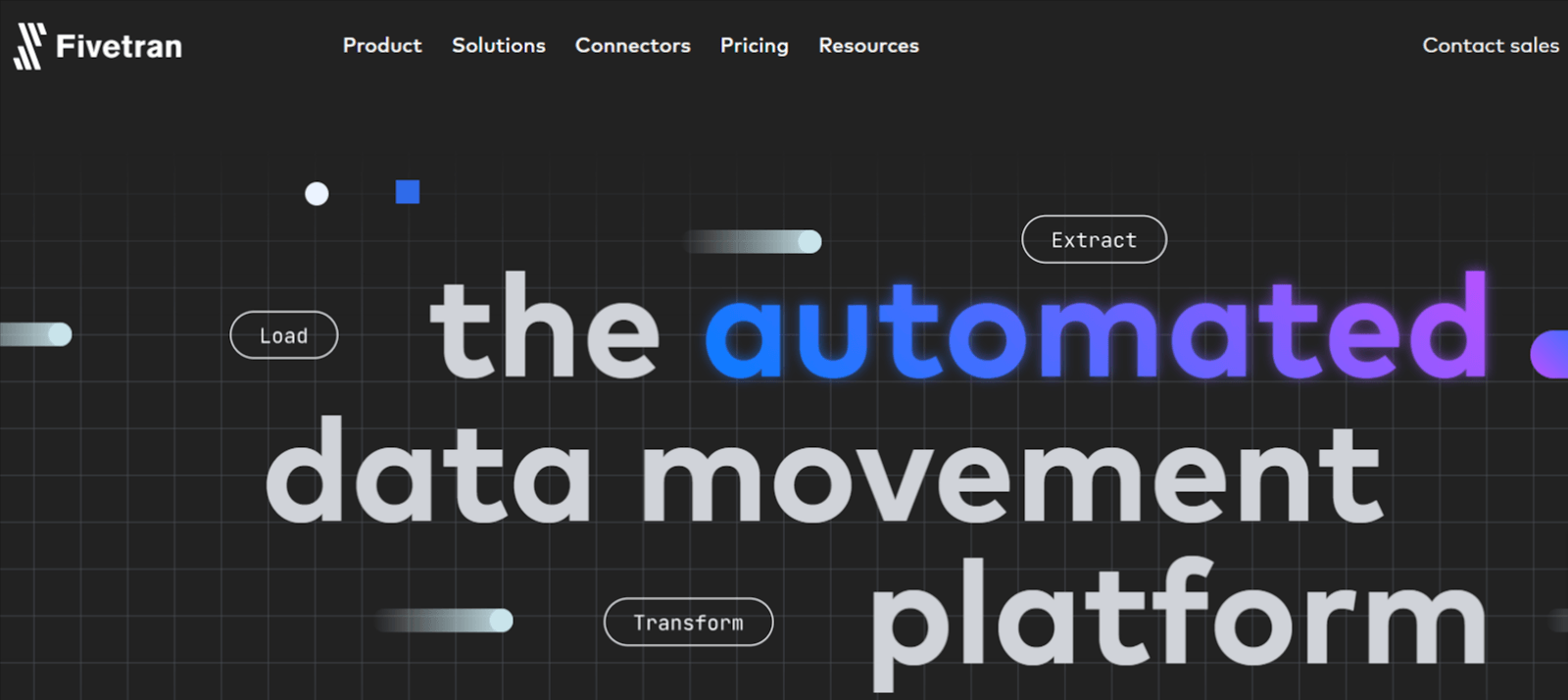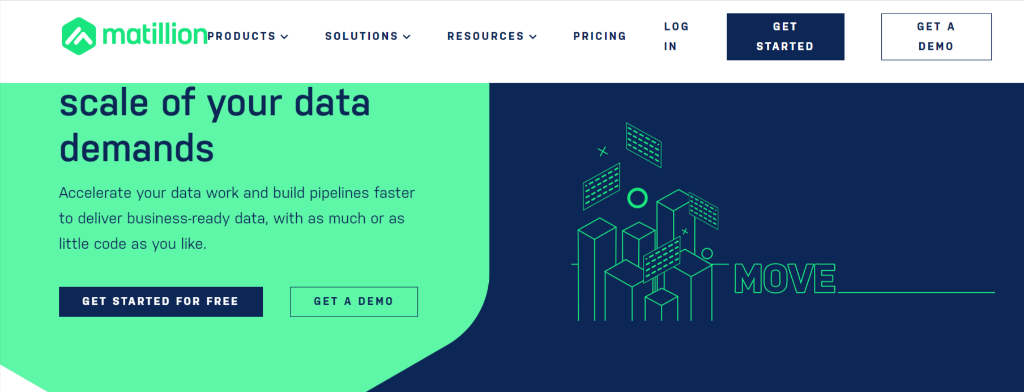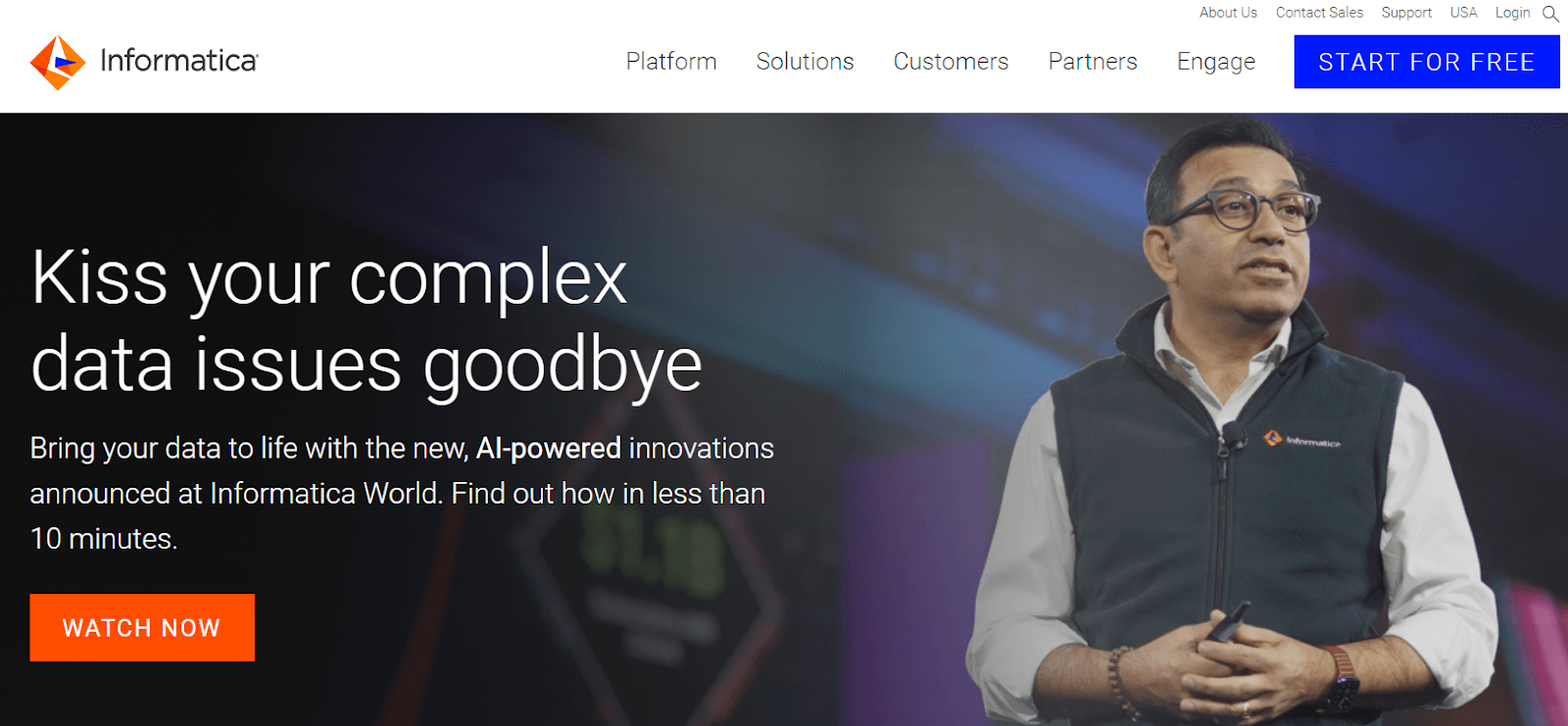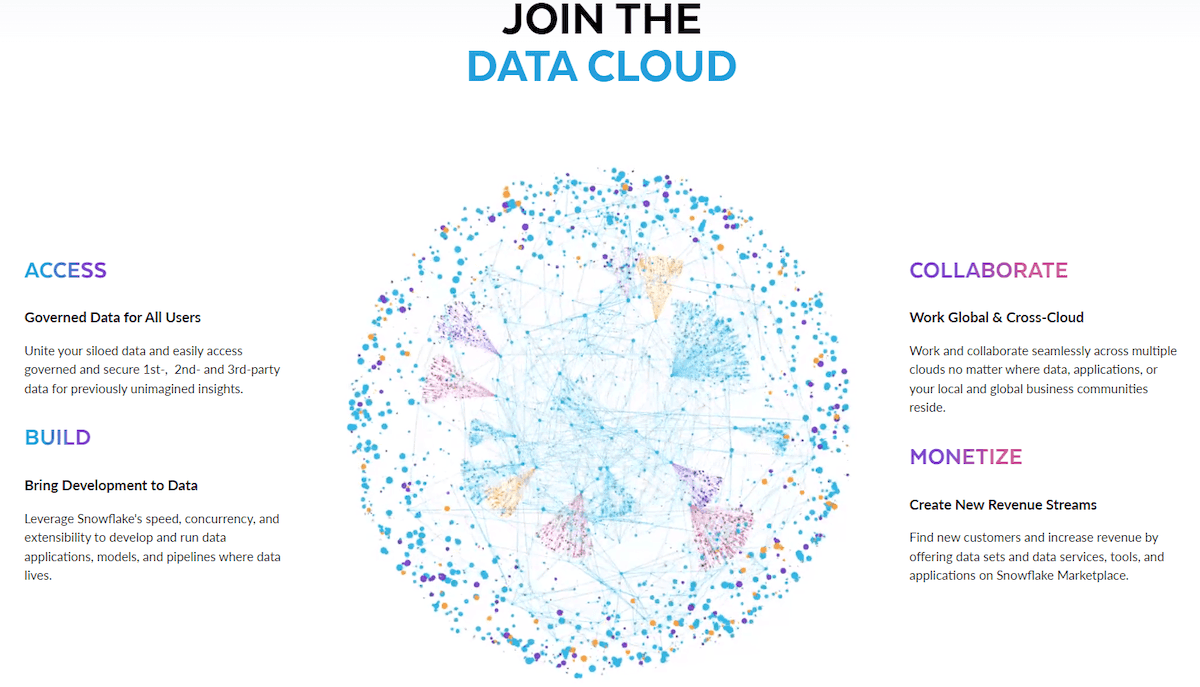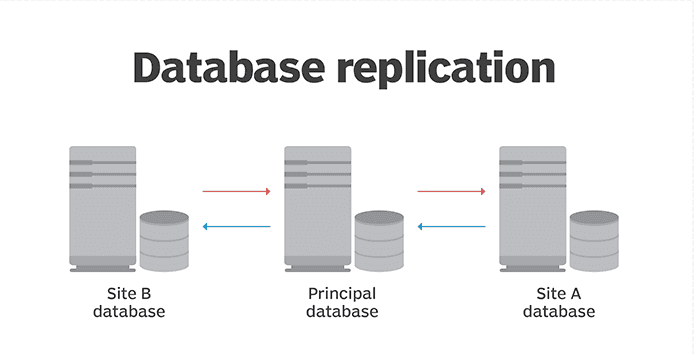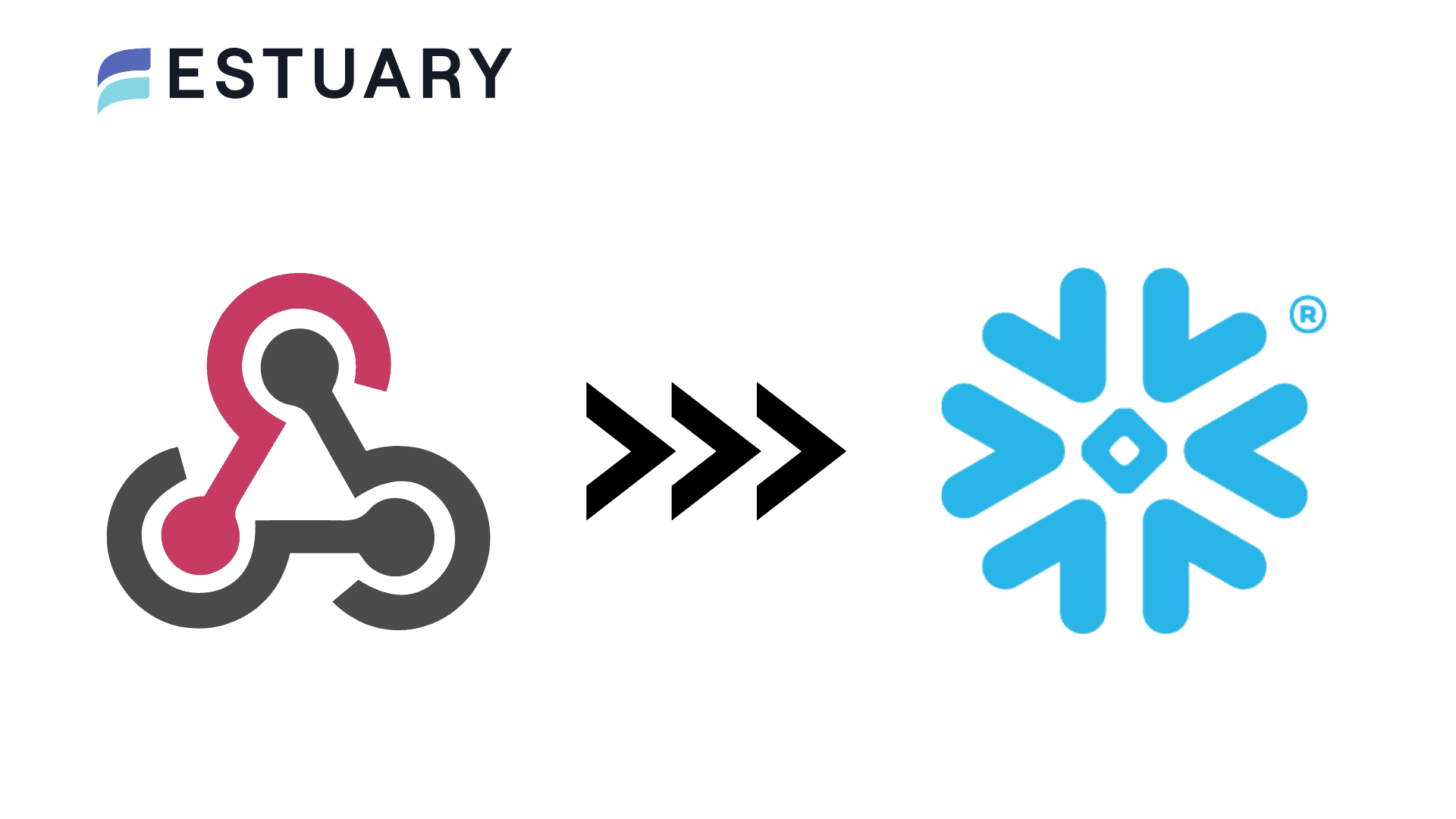
Snowflake is one of the leading cloud data platforms trusted by businesses worldwide for its scalability, high performance, and cost efficiency. Whether you're managing terabytes of real-time data or running complex analytics workloads, Snowflake provides the flexibility and compute power to support modern data-driven operations.
But to unlock Snowflake’s full potential, you need the right Snowflake ETL tools.
These tools help Extract, Transform, and Load data from various sources—like databases, SaaS applications, files, and event streams—into your Snowflake environment. They automate your data pipelines, reduce engineering effort, and ensure that clean, analysis-ready data lands in Snowflake reliably and efficiently.
Quick Navigation: Jump to the section you need:
What are Snowflake ETL Tools? | ETL vs ELT in Snowflake | Native vs Third-Party | Cost Considerations | Real-Time vs Batch | ETL vs ELT Tools | Choosing by Use Case | Challenges & Best Practices | Top 7 Tools
What are Snowflake ETL Tools?
Snowflake ETL tools help automate the process of moving data. They extract data from different sources, change it into a format that works with Snowflake, and load it into Snowflake's platform. These tools help move data from databases, SaaS apps, and file stores into Snowflake.
Some Key Benefits of Snowflake ETL Tools:
- Automation: These tools eliminate the need for manual data processing by automating the entire data pipeline—from extraction to loading. Automation not only saves time but also reduces the likelihood of human errors, resulting in more reliable and accurate data. This means less time spent on tedious tasks and more time focusing on analysis and decision-making.
- Scalability: One of the key advantages of Snowflake ETL tools is their ability to handle growing data volumes effortlessly. Whether you're managing data from a few sources or from hundreds of platforms, these tools can scale with your business needs, ensuring that performance remains consistent regardless of the data load. This scalability allows organizations to expand their data operations without worrying about performance bottlenecks.
- Data Quality: Snowflake ETL tools help maintain high data quality by applying transformation rules and validation checks. These tools can standardize data formats, cleanse it of errors, and ensure that the data entering Snowflake is reliable and consistent. Maintaining data integrity is crucial for producing meaningful insights and avoiding costly errors downstream.
- Accessibility: By loading data into Snowflake’s cloud data warehouse, these tools make your data readily available for analysis and reporting. This accessibility ensures that stakeholders can quickly access the data they need for timely decision-making. Additionally, the availability of real-time or near-real-time data enables more dynamic and responsive business operations.
ETL vs ELT in Snowflake
Snowflake supports both ETL and ELT patterns. In ETL you transform data before loading it into Snowflake, which can make sense when you must enforce strict validations or mask sensitive fields before the warehouse. In ELT you land raw data in Snowflake first and push most transformations into Snowflake using SQL or dbt. ELT is common with Snowflake because it takes advantage of Snowflake’s elastic compute, simplifies pipeline code, and shortens time to value. Many teams end up with a hybrid model where light transformations happen in flight while the heavier business logic runs inside Snowflake.
Criteria for Selecting the Best Snowflake ETL Tools
With dozens of data integration tools on the market, choosing the right ETL solution for Snowflake depends on your specific needs—real-time support, pricing, scalability, and more. Below are the core criteria to consider when evaluating Snowflake ETL tools in 2025:
- Ease of Use - Look for tools with simple, user-friendly designs that make it easy to set up and manage data pipelines. This ensures that teams with different levels of technical skills can use the tool efficiently.
- Scalability - Choose a tool that can handle increasing amounts of data without losing performance. Scalable tools can grow with your business needs.
- Pricing Structure - Choose tools with clear pricing that fits your budget. Avoid tools with hidden fees or unexpected price hikes as your data needs grow.
- Data Source Compatibility - Ensure the tool works with many data sources, such as databases, SaaS apps, and file stores. This will make it easier to integrate data into Snowflake.
- Customer Support - Opt for tools that offer strong customer support and detailed documentation. This ensures quick troubleshooting and helps you get the most out of the tool.
By carefully evaluating these criteria, organizations can select the Snowflake ETL tool that best fits their specific needs, helping them achieve their data integration goals.
Snowflake Native Tools vs Third-Party ETL
Snowflake itself provides features that overlap with ETL, such as external tables, Snowpipe, and Snowpark. These native capabilities are excellent for loading structured files from cloud storage or running transformations directly within Snowflake using SQL or Python. However, they are not full replacements for ETL platforms. Snowflake does not natively extract data from databases, SaaS apps, or APIs at scale. That’s where third-party ETL tools come in. They handle the “E” and “T” stages—capturing data from diverse systems, applying transformations, and then relying on Snowflake’s power for the “L” or additional post-load transformations.
In practice, most teams use Snowflake native features in combination with an ETL tool for complete, production-ready pipelines.
Snowflake ETL Cost Considerations
The cost of ETL for Snowflake depends on two factors: how your ETL tool charges and how efficiently it works with Snowflake’s pay-as-you-go compute model. Many teams underestimate this and end up with unpredictable bills, especially during large migrations or frequent updates.
Here’s how popular models compare:
- MAR-based (e.g., Fivetran): Costs increase with the number of rows updated, which can spike if you have high-churn datasets.
- Row/GB-based (e.g., Airbyte, Stitch): Pricing is tied to data volume, which can get expensive during backfills.
- Change-only (e.g., Estuary Flow): Charges only for incremental changes captured, making costs more predictable for real-time pipelines.
On the Snowflake side, warehouse costs depend on how often data is loaded and transformed. Leveraging Snowpipe Streaming with CDC-based ETL can reduce both latency and warehouse usage, avoiding repeated full reloads.
💡 Want to dive deeper into Snowflake cost optimization? Check out our guide on Cutting Snowflake Ingestion Costs by 70% with Streaming Ingestion to learn how Snowpipe Streaming with Estuary Flow keeps costs predictable while ensuring real-time analytics.
Real-Time ETL vs Batch ETL in Snowflake
Snowflake works well with both batch and real-time pipelines, but the choice between the two depends on your business needs. Batch ETL has been the traditional approach, running at scheduled intervals to move data in bulk. Real-time ETL, powered by Change Data Capture (CDC) and Snowpipe Streaming, delivers continuous updates that keep your Snowflake tables fresh.
Here’s how they compare:
- Batch ETL: Best for periodic reporting and workloads that don’t require second-by-second freshness. Often cheaper to run, but dashboards and ML models may lag by minutes or hours.
- Real-Time ETL: Enables live dashboards, fraud detection, anomaly monitoring, and operational analytics. With CDC pipelines, data lands in Snowflake within seconds, ensuring analytics always reflect the latest changes.
- Hybrid Pipelines: Many teams use a mix—bulk backfills or nightly jobs for history plus real-time streams for new events—striking a balance between cost and latency.
In practice, most modern Snowflake users lean toward real-time or hybrid setups to support dynamic decision-making without overloading compute resources.
ETL vs ELT Tools for Snowflake
When evaluating Snowflake data integration tools, it’s important to understand whether they follow an ETL or ELT pattern. Both approaches can work with Snowflake, but they impact performance, cost, and complexity differently.
- ETL Tools: Transform data before loading into Snowflake. This ensures only clean, curated data lands in your warehouse, which may reduce storage costs. However, it adds complexity since transformations happen outside of Snowflake.
- ELT Tools: Load raw data into Snowflake first, then apply transformations inside the warehouse using SQL or dbt. This approach is popular with Snowflake users because it leverages Snowflake’s elastic compute and simplifies pipelines.
- Hybrid Platforms: Modern tools like Estuary Flow support both approaches. They allow real-time in-flight transformations (ETL) while also integrating smoothly with dbt for warehouse-native ELT.
For most organizations, ELT-first pipelines provide the best balance of flexibility and scalability in Snowflake, with ETL reserved for compliance-heavy or preprocessing-heavy use cases.
Choosing Snowflake ETL Tools by Use Case
The “best” ETL tool for Snowflake often depends on your specific workload. Different tools excel in different scenarios:
- Real-Time Analytics: Estuary Flow is ideal for streaming-first pipelines with sub-second latency, Snowpipe Streaming integration, and CDC support. Perfect for fraud detection, IoT, or live dashboards.
- Low-Code ELT: Fivetran works well for teams that prioritize ease of setup and want a fully managed ELT solution, though it comes with batch latency and MAR-based costs.
- Heavy Transformations: Matillion and Informatica shine for complex transformation workflows, especially when you need pushdown optimization or enterprise governance.
- Budget-Friendly Pipelines: Stitch is a fit for smaller teams needing simple, affordable ELT, though it’s limited to batch loads.
- Open-Source Flexibility: Airbyte is best for customization and community-driven connector development, though it requires more technical ownership.
By mapping tools to use cases, you can avoid overpaying for features you don’t need and ensure your Snowflake pipelines align with business priorities.
Snowflake ETL Challenges & Best Practices
While Snowflake integrates seamlessly with modern ETL tools, teams often face common hurdles during implementation. Addressing these early ensures smooth, scalable pipelines.
Key Challenges
- Schema Drift: Source systems frequently change schemas, which can break downstream Snowflake pipelines if not handled automatically.
- Data Latency: Batch-based ETL introduces lag, leaving dashboards and ML models behind real-world activity.
- Cost Spikes: Inefficient loads (like full table reloads) can drive up Snowflake compute costs.
- Monitoring Gaps: Without proper observability, it’s hard to detect pipeline failures or data quality issues quickly.
Best Practices
- Use CDC for Freshness: Adopt Change Data Capture with tools like Estuary Flow to stream incremental changes instead of reloading entire tables.
- Automate Schema Evolution: Pick tools that enforce schemas and adapt automatically to changes in source systems.
- Leverage Snowpipe Streaming: For high-velocity data, use Snowpipe Streaming rather than traditional Snowpipe to reduce latency and costs.
- Enable Monitoring & Alerts: Integrate with monitoring tools like Prometheus or Datadog to track latency, throughput, and errors in real time.
By following these practices, teams can avoid pipeline failures, control costs, and ensure their Snowflake data is always reliable and up to date.
Top 7 Snowflake ETL Tools in 2025
Here are the best ETL tools for Snowflake. Let's dive into each one and explore its features.
1. Estuary Flow
Best For: Real-time ETL, ELT, and CDC pipelines with Snowpipe Streaming
Estuary Flow is a modern data integration platform designed for streaming-first architectures. It enables high-volume, low-latency pipelines into Snowflake and other destinations, combining real-time CDC with batch ingestion in a single tool. With a visual interface, flexible transformation engine, and native Snowpipe Streaming support, Estuary removes the complexity of building real-time Snowflake pipelines without requiring custom scripts or infrastructure.
Key Features
- Real-Time + Batch in One: Sub-second CDC plus bulk backfills in a unified pipeline.
- Snowpipe Streaming Native: Direct ingestion into Snowflake tables without staging or COPY commands.
- Flexible Transformations: Real-time SQL or TypeScript for ETL, plus dbt for warehouse-native ELT.
- Schema Evolution: Automatic updates when source schemas change.
- Multi-Destination Support: Send the same stream to Snowflake, plus other systems in parallel.
Pros
- Ultra-Low Latency: Dashboards, ML models, and anomaly detection always reflect live data.
- Cost-Efficient: Customers have cut Snowflake ingestion costs by up to 70% (see how).
- Reliable CDC: Exactly-once delivery ensures no duplicates or data loss.
- ETL + ELT Flexibility: Choose where transformations run—before or inside Snowflake.
- Scalable & Resilient: Built to handle enterprise-scale pipelines without bottlenecks.
Cons
- Advanced features like CDC tuning and complex transformations may require technical expertise, especially in large-scale or custom workflows.
Pricing
- Free Plan: Up to 2 connectors and 10 GB/month.
- Cloud Plan: $0.50 per GB of change data moved + $0.14 per connector/hour.
- Enterprise: Custom pricing for large-scale or compliance-heavy environments.
👉 Unlike batch-first tools, Estuary Flow combines real-time freshness, predictable costs, and hybrid ETL/ELT flexibility, making it a top choice for teams that need both speed and reliability in Snowflake.
2. Fivetran
Best For: Low-code ELT pipelines with a wide connector library
Fivetran is one of the most widely recognized cloud-native ELT tools, known for its simplicity and large connector ecosystem. With over 300+ managed connectors and 300+ lite (API) connectors, it automates extraction and loading of data into Snowflake with minimal setup. Its ELT-first approach means data is loaded raw into Snowflake, with transformations typically handled downstream in SQL or dbt.
Key Features
- Large Connector Library: 600+ connectors covering databases, SaaS apps, and APIs.
- ELT-First Architecture: Handles extraction and loading, leaving transformations for Snowflake.
- Automated Schema Handling: Adapts to schema drift with minimal user intervention.
- Cloud-Native Scaling: Built for elastic workloads in the cloud.
Pros
- Ease of Use: Very quick to set up, minimal coding required.
- Connector Variety: Wide coverage of sources means fewer custom pipelines.
- Automation: Schema management and pipeline orchestration largely hands-off.
Cons
- Batch Latency: Relies on batch-based CDC, which can delay data freshness—dashboards may lag by minutes or hours.
- Unpredictable Costs: MAR-based pricing often leads to spiking bills on high-churn datasets.
- Reliability: Some users report load failures or sync inconsistencies.
Pricing
- MAR-Based Model: Charges based on the number of Monthly Active Rows processed. Costs rise quickly if datasets update frequently or if you need near-real-time loads.
👉 Fivetran is a strong option for teams that want quick, no-code Snowflake pipelines. But for real-time use cases or predictable costs, platforms like Estuary provide a streaming-first alternative with sub-second CDC and transparent pricing.
3. Matillion
Best For: Complex data transformations with pushdown optimization
Matillion is a cloud-native ETL tool built specifically for data warehouses like Snowflake, BigQuery, and Redshift. It’s popular among teams that need strong transformation capabilities alongside data loading. With its mix of drag-and-drop workflows and advanced scripting, Matillion is flexible for both business users and data engineers. Its hallmark is pushdown optimization, where heavy transformations are executed directly inside Snowflake for speed and scalability.
Key Features
- Cloud-Native Architecture: Runs natively in Snowflake environments without on-prem overhead.
- Flexible Transformations: Supports visual workflows and code-based logic.
- Pushdown Optimization: Pushes transformations into Snowflake to reduce tool-side processing.
- Broad Integrations: Connects with popular databases, SaaS apps, and file systems.
Pros
- Powerful Transformations: Suitable for enterprises with heavy transformation logic.
- Flexible UX: Mix of drag-and-drop UI and advanced coding options.
- Optimized Performance: Pushdown ensures efficient execution on Snowflake’s compute engine.
Cons
- High Starting Price: Starts at $1,000/month, which can be steep for smaller teams.
- Vendor Lock-In Risk: Deep integration with Snowflake/Redshift can make switching harder.
- Learning Curve: Complex transformations may require skilled data engineers.
Pricing
- Starts at $1,000 per month for 500 credits (each credit = 1 vCore hour).
- Additional costs apply for higher volumes and transformations.
👉 Matillion is best when your Snowflake pipelines require complex, transformation-heavy workflows. But if you need real-time, streaming ingestion with lower latency and simpler pipelines, Estuary Flow provides a more cost-efficient, modern option.
4. Informatica PowerCenter
Best For: Enterprise-grade ETL with governance and compliance needs
Informatica PowerCenter is one of the longstanding leaders in ETL for enterprises. Known for its robustness, governance features, and ability to handle complex environments, it’s often chosen by large organizations with strict compliance, security, and data quality requirements. PowerCenter supports wide connectivity and advanced features like data masking, master data management, and pipeline partitioning for performance.
Key Features
- Enterprise-Scale ETL: Handles large, heterogeneous data sources across on-prem and cloud.
- Data Governance & Security: Built-in features like data masking and lineage tracking.
- Pipeline Partitioning: Parallel processing improves throughput for massive datasets.
- Pushdown Optimization: Executes transformations in Snowflake or the target system for efficiency.
Pros
- Scalable for Big Data: Trusted in highly complex, high-volume enterprise settings.
- Compliance Ready: Features like masking and governance align with regulatory requirements.
- Collaboration Support: Works well for globally distributed teams with shared projects.
Cons
- Expensive: Pricing often starts above $2,000/month, making it prohibitive for smaller teams.
- Rigid Architecture: Can require adapting your workflows to fit Informatica’s model.
- Complex Setup: Steeper learning curve compared to modern SaaS ETL tools.
Pricing
- Starts at around $2,000/month, with enterprise-scale deployments costing significantly more.
- Custom enterprise contracts are the norm.
👉 Informatica PowerCenter is the go-to for large, compliance-heavy enterprises that value governance and advanced ETL capabilities. But for teams looking for agility, real-time ingestion, and lower TCO, Estuary Flow delivers a modern alternative purpose-built for Snowflake.
5. Talend
Best For: Enterprise data management with broad connectivity
Talend is a versatile data integration platform that combines ETL, ELT, and data governance features. It offers two main products: Talend Data Fabric (a full enterprise-grade platform for governance and integration) and Stitch (a simpler managed ELT pipeline). Talend is favored by enterprises that need strong compliance and connectivity to hundreds of data sources, including Snowflake.
Key Features
- Comprehensive Connectivity: Integrates with 800+ sources (databases, SaaS apps, APIs).
- ETL + ELT Flexibility: Supports pre-load transformations or warehouse-native ELT in Snowflake.
- Data Governance: Features like data quality, lineage, and compliance baked into the platform.
- User-Friendly Interface: Drag-and-drop UI for non-technical teams, with scripting support for engineers.
Pros
- Wide Source Coverage: One of the broadest connector ecosystems.
- Governance & Quality: Strong tooling for enterprises with compliance or data trust needs.
- Scalable: Fits both mid-size projects and complex enterprise pipelines.
Cons
- No Open-Source: Talend Open Studio was discontinued in 2024, leaving only paid versions.
- Time-Consuming Setup: Complex workflows and custom transformations can be labor-intensive.
- Enterprise Pricing: Cost varies by deployment scale, often high for smaller teams.
Pricing
- Custom Quotes Only: Pricing depends on product (Talend Data Fabric vs Stitch) and scale.
- With the open-source edition gone, all advanced use cases now require paid enterprise plans.
👉 Talend is best suited for enterprises that need governance and deep integration breadth. But if your priority is real-time streaming into Snowflake with predictable pricing, Estuary Flow is a leaner, modern option.
6. Stitch
Best For: Small teams needing simple, budget-friendly ELT
Stitch is a cloud-based ELT platform originally built on the open-source Singer framework. Now part of Talend, Stitch is designed for simplicity and affordability, making it a good choice for startups and smaller teams that need to load data into Snowflake without complex setup. However, it’s limited to batch ELT only and lacks real-time capabilities.
Key Features
- Singer Framework Compatibility: Leverages open-source Singer taps for flexible extraction.
- Batch ELT Pipelines: Data replication at intervals (minimum 30 minutes).
- Log Retention: Up to 60 days of pipeline logs for troubleshooting.
- Cloud-Native: Fully managed SaaS platform with minimal infrastructure overhead.
Pros
- Easy Setup: Quick to launch pipelines without heavy engineering.
- Affordable: Entry-level pricing makes it accessible for small teams.
- Open-Source Friendly: Compatibility with Singer taps allows broader source coverage.
Cons
- No Real-Time: Limited to batch loads; unsuitable for streaming or low-latency analytics.
- Fewer Connectors: ~140 sources vs 300+ in Fivetran or Airbyte.
- Soft Deletes Only: Deleted records aren’t fully removed downstream, adding cleanup work.
Pricing
- Basic Plan: $100/month (3M rows).
- Advanced Plan: $1,250/month (100M rows).
- Premium Plan: $2,500/month (1B rows).
👉 Stitch is best for small-scale Snowflake ELT projects where cost and simplicity matter more than latency. But if your workloads require real-time CDC, streaming, or large-scale scalability, Estuary Flow is a far stronger option.
7. Airbyte
Best For: Open-source flexibility and custom connectors
Airbyte is a fast-growing open-source ELT platform launched in 2020. It has gained popularity for its flexibility, strong community adoption, and ability to build custom connectors. Airbyte offers both a self-hosted open-source edition and Airbyte Cloud, a managed SaaS service. While it’s attractive for developers who want control, it remains batch-only and requires more ownership compared to turnkey SaaS tools.
Key Features
- Open-Source Foundation: Thousands of contributors and compatibility with Singer taps.
- Custom Connectors: Build your own integrations in Python or use community-developed ones.
- Batch ELT Pipelines: Supports intervals as short as 5 minutes (self-hosted) or hourly (Cloud).
- Hybrid Deployment: Choice of self-hosted control or managed SaaS convenience.
Pros
- Developer-Friendly: Highly customizable with strong community contributions.
- Flexible Cost Options: Free open-source use; pay-as-you-go for Airbyte Cloud.
- Connector Growth: Over 300 connectors, with dozens actively maintained.
Cons
- No Real-Time: Limited to batch loads; even the fastest syncs aren’t streaming.
- Maintenance Burden: Many connectors are community-built and may lack reliability.
- ELT Only: No pre-load transformations; all logic runs inside Snowflake.
- Limited DataOps Features: Automation and schema evolution support lag behind managed tools.
Pricing
- Airbyte Cloud: Starts at $10/GB of data moved or $15 per million rows.
- Open-Source: Free to self-host, but infrastructure and maintenance costs apply.
👉 Airbyte is a solid choice for technical teams that want open-source control and custom connectors. But for real-time ingestion and lower operational overhead, Estuary Flow remains a stronger fit for Snowflake users needing sub-second CDC pipelines.
Comparison Table: Best Snowflake ETL Tools in 2025
Tool | Best For | Pricing Model | Real-Time Support | Managed Connectors |
| Estuary Flow | Real-time ETL & CDC pipelines | $0.50/GB (changes only) | ✅ Yes (sub-second via Snowpipe Streaming) | ✅ Yes |
| Fivetran | Fully managed ELT with large connector set | MAR-based (variable) | ❌ No (batch CDC only) | ✅ Yes (300+) |
| Matillion | Heavy transformations with pushdown | Starts $1,000+/mo | ✅ Yes (batch + near real-time) | ✅ Yes |
| Informatica | Enterprise-scale ETL & governance | $2,000+/mo (custom) | ✅ Yes (real-time capable) | ✅ Yes |
| Talend | Enterprise data management + governance | Custom (enterprise) | ✅ Yes (real-time + batch) | ✅ Yes (800+) |
| Stitch | Budget-friendly ELT for smaller teams | $100–$2,500+/mo | ❌ No (batch only, 30+ min) | ✅ Yes (~140) |
| Airbyte | Open-source flexibility & custom builds | $10/GB or open-source | ❌ No (batch only, 5+ min) | Limited (50 managed, 300+ total) |
Conclusion
Choosing the right Snowflake ETL solution is not just about moving data — it’s about enabling your business to operate at the speed of real-time insights. Snowflake’s native features like Snowpipe and Snowpark provide powerful ingestion and transformation capabilities, but they are most effective when paired with the right ETL or ELT tool.
Batch-based tools like Fivetran, Matillion, and Informatica work well for periodic reporting and traditional analytics, while budget options like Stitch or open-source Airbyte suit smaller teams or custom workloads. However, they often come with trade-offs in latency, cost predictability, or management overhead.
For organizations that need real-time pipelines, predictable pricing, and seamless schema handling, Estuary Flow offers a modern alternative. With native support for Snowpipe Streaming, CDC-based data capture, and flexible ETL/ELT workflows, it delivers sub-second data freshness without the hidden costs or brittle scripts of legacy tools.
In short:
- Use batch ETL when freshness is less critical and cost is the priority.
- Use real-time ETL when powering dashboards, ML models, and operational analytics that depend on live data.
- Choose Estuary Flow when you want a scalable, streaming-first platform that integrates directly with Snowflake and grows with your data needs.
👉 Ready to modernize your Snowflake pipelines? Try Estuary Flow and see how real-time ETL can transform the way your business uses data.
Additional Related Tools Resources:
FAQs
Do I need ETL for Snowflake?
Is real-time ETL possible with Snowflake?

About the author
Rob has worked extensively in marketing and product marketing on database, data integration, API management, and application integration technologies at WS02, Firebolt, Imply, GridGain, Axway, Informatica, and TIBCO.





